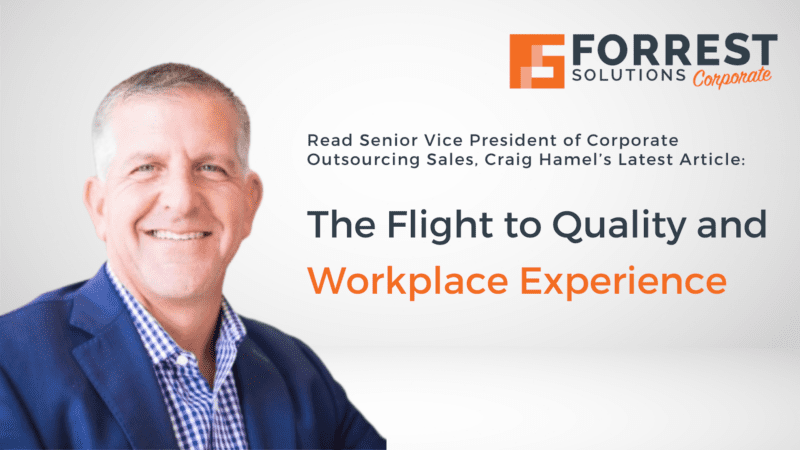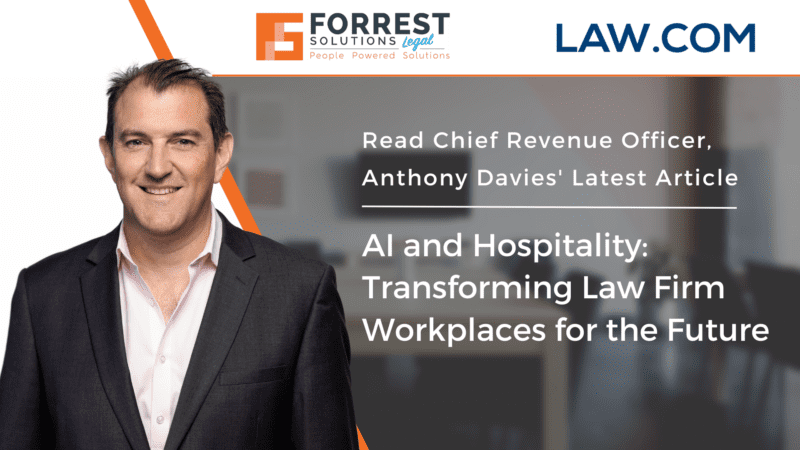
Transforming the Law Firm Office with Workplace Experience
By Anthony Davies
This article originally appeared in Legal Business World Here: here
The Tug of War Begins
March 2023 will mark the three-year anniversary of the onset of the coronavirus pandemic and the mandated closure of non-essential businesses. During the two-year span of work-from-home that ensued, law firms—for the most part—performed well financially, posting record profits. Revenue for the Am Law 100 grew by 6.6% and 1.1% in the Am Law 200, respectively, and profits per equity partner were up 8.8% for the Am law 200 and 13.4% for the Am Law 100[1].
We were, in general, surprised, and the initial WFH success got attorneys thinking that they’d like to keep it. In fact, by the end of 2021, the vast majority of attorneys (86%) preferred some form of WFH whereas prior to the pandemic, less than 30% of attorneys reported this preference.
However, and despite the historically robust performance, there was never a sense from leadership that 100% remote working would become permanent for law firms: in fact, the opposite. As the stewards of brand longevity, law firm leaders seemed to agree that law firms are businesses of trust relationships, composed of institutional and cultural knowledge, and that meaningful chunks of this are developed and passed on only in in-person mentorship, collaboration and culture-building activities.
And so, the tug of war began, with leadership pulling in one direction towards “more days in the office” and attorneys in another, towards “less days in the office.”
This begs the question: how are firms doing with their return-to-office? What “return-to-office” programs—if any–have been successful in actually getting attorneys back in the office for more days? We decided to investigate.
What the Data Shows
In February 2023, Forrest Solutions launched an RTO survey to decision-makers across the Am Law 100 and 200 and received responses from approximately 20% of the audience, and there was one central theme that became clear: firms have to earn their attorneys back in the office. Here’s what we mean.
The vast majority of respondents (93.54%) reported their firms were implementing hybrid models that required less days in the office than pre-COVID; however, even of this group of ‘hybrid’ firms, 94.12% do not comply with their firm’s RTO policy. That’s a pretty large number and what it generally seems to mean is that if the firm has strongly suggested 3 days a week in the office, attorneys are only going in 1 or 2.
But here’s where it gets interesting: of the 93.54% of firms that are now hybrid, 12.5% made no changes to real estate and did not add amenities or flexible workplace strategies. These firms’ attorneys averaged 2 days a week in the office.
Of the 87.5% of firms made at least one change or addition to their real estate, amenities, flexible workplace strategies–from adding baristas to wellness programs, workplace experience or redesigning floorplans–these firms’ attorneys averaged 2.36 days in the office.
While this may at first appear to be an incremental difference, this is 18% or an extra 46 days a year, or 9 additional business weeks in the office—and that’s significant.
People want to be with people—but firms have to do something to reimagine their offices to create the atmosphere for connection and collaboration.
What’s Working in Practice
We’ve long contended that the three main reasons anybody attends the workplace ‘in person’ is to either connect, collaborate or focus. The pre-pandemic workplace was built for the latter, but given the focus is now on using the workplace primarily to focus on its people and the need to connect and collaborate, many law firms are re-thinking, redesigning and relocating the office to better serve these needs—and our data shows that firms that do this move in the direction of more days in the office.
Here’s a little bit more about each tactic that is helping firms move incrementally to more days in the office.
Real Estate – While some firms have elected to reduce space, many have re-utilized space, or even relocated their space to make it more attractive and accessible for its people. Floorplans have been redesigned to reflect the need for more connection and collaboration space. Many firms plan to relocate to locations better served by public transport, and some are even quitting leases early to do this.
Hoteling/Hot Desking –Paying for real estate that is not used is a waste but asking employees to come back to half empty offices is arguably worse when the objective of office time is to be with people. Hot desk floors are starting to appear in law firms, and a common theme is to make these the most desirable floors in the building. Added amenities, refreshments and events make these floors most attractive, and there is now a growing group of volunteers electing to give up their permanent desk.
Technology – When we speak of the ‘intentionality’ of attorneys’ in-office time, this is something that is going to require technology. Coordinating reservable and shared space, locating colleagues, pre-ordering refreshments and reporting on office utilization lean heavily on the right technology. Room booking systems existed before Covid, but these technologies have evolved fast, giving employees increased control over their whole workplace experience.
Digitization – Paper Documents are particularly inconvenient for hybrid schedules. In the early days of the pandemic, records centers utilized curbside deliveries to get documents to partners homes. Increasingly, widescale scanning projects have now streamlined this process allowing lawyers to review documents electronically and securely wherever they decide to work that day. The paperless office is slowly becoming a necessity to support what attorneys want rather than a nicety.
Incentive Programs – It started with free meals and snacks, but incentive programs have now become much more sophisticated. There are examples of firms rewarding in person work with benefits including better parking spaces, leisure vouchers or even increased bonus payments. Attending social and networking events are an especially important part of driving culture, so can now carry the biggest incentives.
Workplace Experience – Workplace experience is the glue many firms are implementing to knit together all of the changes to the traditional law firm office. In my article “The Rise of Hospitality in Law Firms” from January 2022, I talked about how our professional services and advisory clients had established a new way of focusing in their people by turning to hospitality to attract and retain staff.
In other industries, this 5-star hospitality approach has been long integrated in leading brands. These global brands are creating immersive, authentic connections that support meaningful memorable moments in an effort to drive loyal behavior. This is one of the pillars of Ritz Carlton’s world-renowned service.
This is what firms increasingly are looking for: workplace experience, a high engagement, white-glove service that transforms your office into a destination. This white glove services provide high levels of attention, including tailored coffee and water choices, room escorting versus pointing, walking guests with umbrellas in inclement weather, restaurant recommendations and reservations, room temperature adjustments upon request and more.
But workplace experience also means providing seamless support to make hybrid or hoteling or flexible seating work better, ensuring the complexities of whatever hybrid model is in place are working seamlessly and efficiently and the professionals are productive and happy. This positive experience is essential to the success of hybrid operation – and it’s a new kind of hospitality offering that goes well beyond ‘service’. Hospitality is how you make a person feel, and that’s the focus of workplace experience.
Conclusion
Implementing many of these initiatives requires expertise and resources that are not core to law firm activities. Accessing these resources through a flexible outsourcing provider with expertise in talent, hospitality and technology has enabled many firms to drive their hybrid schedule forward much faster – and move up the success—as measured in days in the office– timeline as well.
The modern workplace continues to play a crucially important role in collaborating and building culture and loyalty, and many firms have now found the right balance and experience to do this without driving employees away. I look forward to continued success building the optimum hybrid workplace experience.
[1] American Lawyer Am Law 100/200 Reports 2021





